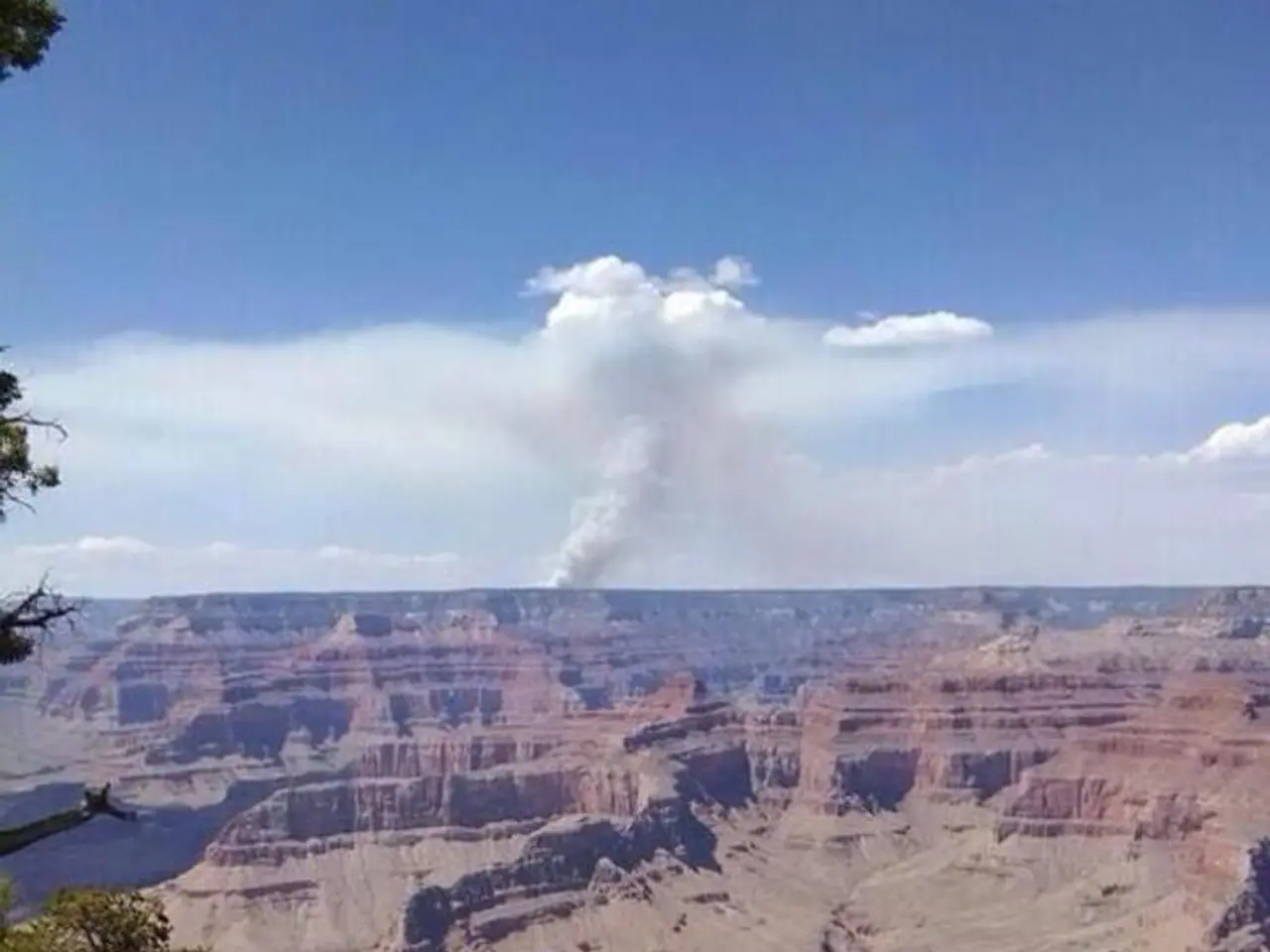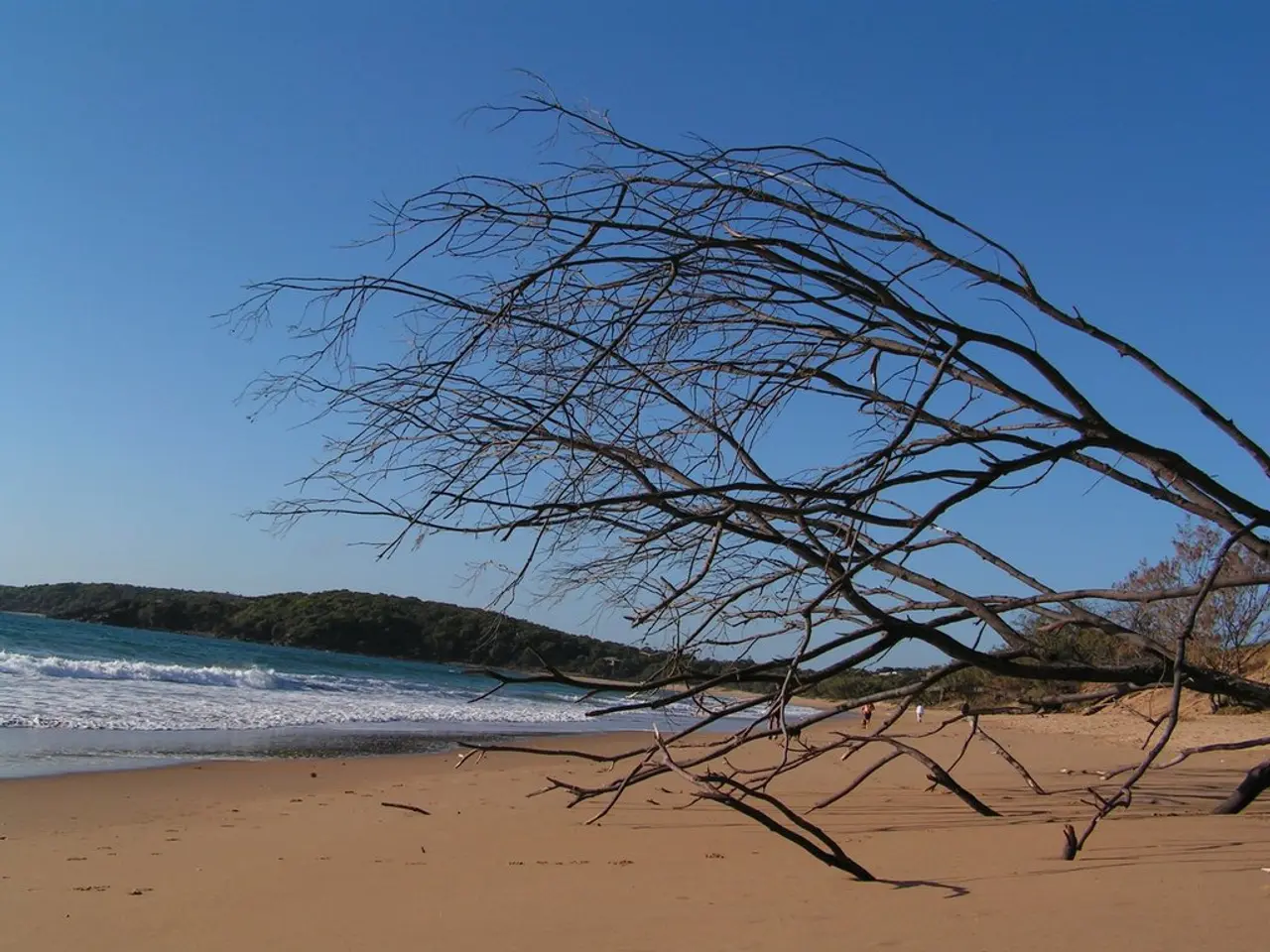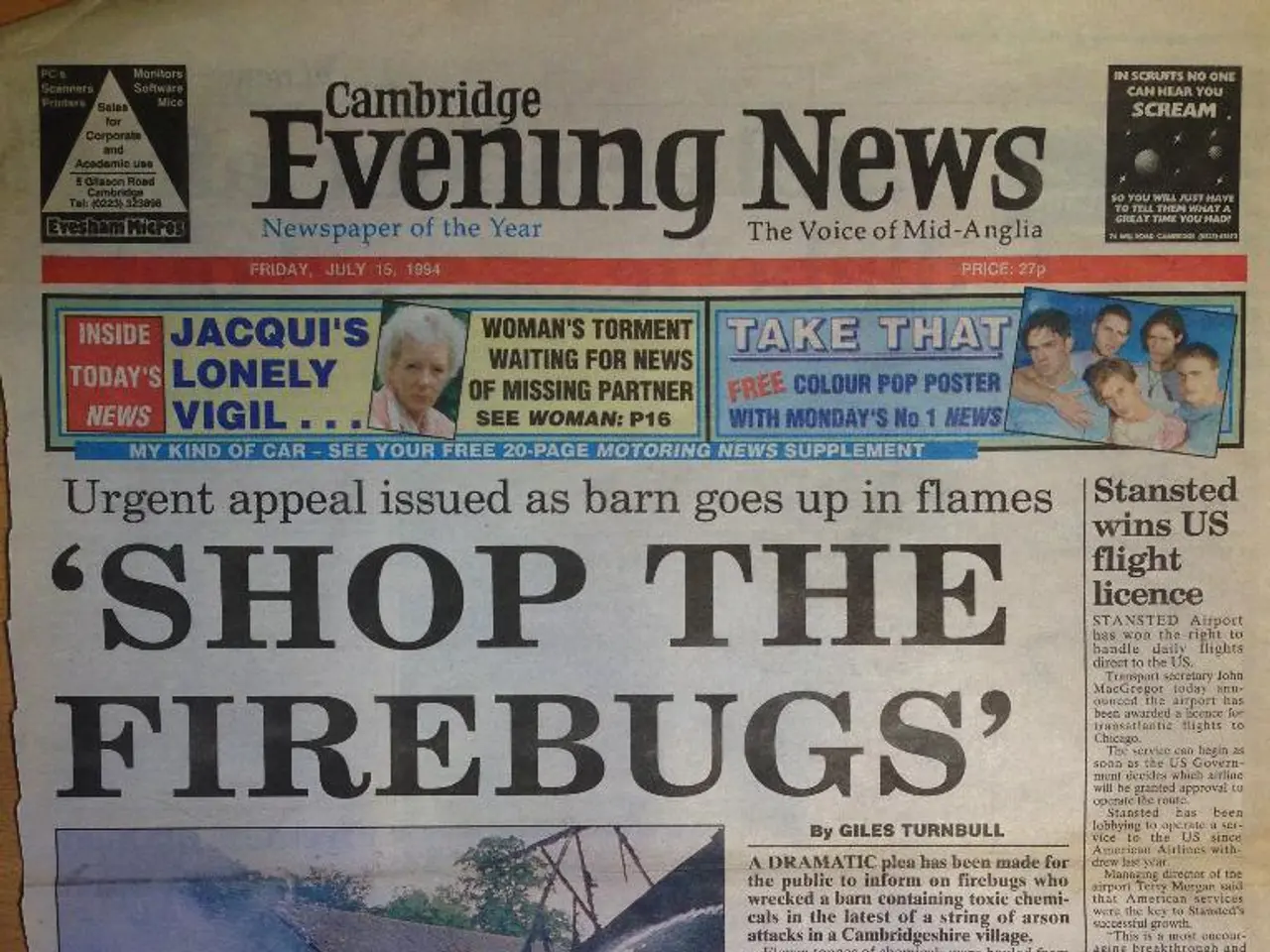Emergency responders extract driver from Rio Grande River close to Hatch region.
In the southwestern United States, the monsoon season has brought a new set of challenges to Luna and Dona Ana counties in New Mexico. On Monday, intense dust storms, known as haboobs, swept across the region, causing significant disruptions and posing threats to both health and road safety.
Last week, a pickup truck driver attempted to navigate through a current on N. Valley Drive, near Rincon Valley, but was carried into a river and stranded on the roof. The incident serves as a stark reminder of the hazards posed by these powerful storms.
Haboobs form when cold downdrafts from thunderstorms push dust and debris across the desert landscape, lifting large amounts of dust and dirt into the air. This results in drastic reductions in visibility, creating dangerous situations, especially on roads. The dry, loose soil of the region is easily lifted by these powerful winds during monsoon storms, exacerbating the problem.
The monsoon season creates atmospheric instability, producing the strong winds necessary for haboobs. These storms can be enormous, with dust walls reaching thousands of feet high and stretching across wide areas. In the city of Deming, intermittent blinding conditions were reported due to the storm.
The effects of haboobs extend beyond immediate visibility issues. Dust particles remain suspended in the atmosphere for days, worsening air quality. This can increase the risk of respiratory illnesses such as Valley fever, which affects vulnerable populations like children, the elderly, and those with pre-existing respiratory conditions.
During these storms, reduced visibility makes driving extremely hazardous, increasing the risk of accidents. Drivers caught in a haboob are advised to pull over to the side of the road, turn off their vehicles, and wait until the storm passes to avoid collisions or being thrown off the road by debris and strong winds. Flying debris and rocks during these storms can cause physical harm or damage vehicles.
In response to the recent haboobs, emergency responders from multiple counties, including Las Cruces, Hatch, Dona Ana, and Sierra counties, New Mexico State Police, U.S. Border Patrol, Mesilla Valley Search and Rescue, the Las Cruces Fire Department Swiftwater Rescue Team, and Dona Ana Fire Rescue personnel, were involved in the rescue operation. The truck driver was eventually rescued, and no injuries were reported during the operation.
The Las Cruces Fire Department issued an advisory reminding motorists to avoid crossing water on roadways, emphasising the danger posed by floodwaters. The public safety motto issued by the department is "Turn around, don't drown."
As the monsoon season continues, it is crucial for drivers to be aware of the risks posed by haboobs and to take necessary precautions to ensure their safety and the safety of others on the road.
- Despite the monsoon season's challenges, several news outlets in the southwestern United States are focusing on car-maintenance tips for navigation during haboobs.
- The Luna and Dona Ana counties lifestyle is experiencing a shift due to the unpredictable weather conditions, with car maintenance and driving safety becoming more of a concern.
- General news networks are reporting an increase in accidents during the monsoon season, with car-related incidents being a significant concern due to hazardous road conditions caused by haboobs.
- As the monsoon season progresses, local weather reports are advising residents to stay updated on the latest news regarding the weather conditions and road safety to ensure safety and reduce the risk of accidents, especially during haboob events.








